

24. Analytical aspects |
1131 |
|||
2 |
|
|
|
|
3 |
|
|
||
|
|
X |
(a) X = Y = H |
|
|
|
|
||
|
|
|
- |
|
|
|
|
(b) X = 2 Ν Ο2, Y = H |
|
Y |
(c) X = 3-Ν Ο2, Y = H |
|
||
(d) X = 4-Ν Ο2, Y = H |
|
|||
O |
|
|||
8
(e) X = H, Y = 8-NO2
O
(232)
southern California and in Washington, DC. It was concluded that nitrodibenzopyranones are formed in the atmosphere485.
A sensitive method for the detection of mutagenic nitroarenes is based on a new strain of Salmonella typhimurium, developed by genetic engineering. Acetyl-CoA:N- hydroxyarylamine O-acetyl transferase is an enzyme involved in the intracellular metabolic activation of arylhydroxylamines derived from mutagenic nitroarenes and aromatic amines. This strain has high O-acetyl transferase activity and was extremely sensitive to the mutagenic action of 229a, 230, 229d, Glu-P-1, 2-aminofluorene (233) and 2-aminoanthracene (105)486. Biological and chemical assays were recently
performed |
on mutagens in the semivolatile phase |
of airborne particulate matter |
of diesel |
and gasoline engine emission476. Several |
new nitroazabenzo[a]pyrenes |
were detected and found to be mutagenic using Salmonella typhimurium TA98, including 1- and 3-nitro-6-azabenzo[a]pyrenes (234) and their corresponding N- oxides. The compounds were detected by HPLC-MS in the semivolatile phase of airborne particulate matter (0.3 1.2 ng/g) and in diesel and gasoline engine emissions (2.2 7.7 ng/g)487.
|
1 |
|
X |
|
3 |
|
(a) X = 1-NO2 |
NH2 |
(b) X = 3-NO2 |
|
N |
(233) |
(234) |
A sensitive umu test system for the detection of mutagenic nitroarenes has been developed, using a new strain of Salmonella typhimurium NM1011 with a high nitroreductase activity. This enables one to monitor the genotoxic activity of various nitroarene compounds by measuring the ˇ-galactosidase activity of the cells. It had nitrofurazone-reductase activity about 3 times higher than the parent strain and was highly sensitive to 1-nitropyrene (229a), 2-nitrofluorene (230), 1-nitronaphthalene, 2- nitronaphthalene, m-dinitrobenzene, 4,40 -dinitrobiphenyl (227b), the nitrofluoranthenes 231a c, 5-nitroacenaphthene (235) and 2,4-dinitrotoluene488.
Immunoassay was used for determination of metabolites of nitroarenes and PAH in the urine of occupational patients exposed to diesel exhaust. It was found that the urinary
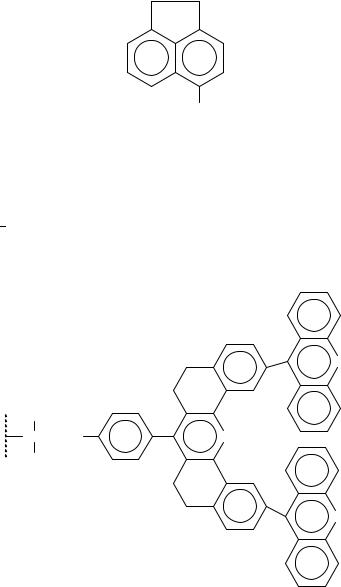
1132 |
Jacob Zabicky and Shmuel Bittner |
NO2
(235)
excretion of metabolites was significantly enhanced in diesel mechanics as compared to that of office clerks489.
The trapping efficiency of solid-phase adsorbents was compared for 4-nitrobiphenyl (227a), 2-nitrofluorene (230) and others. XAD-4 was the best adsorbent for aromatic compounds, followed by supercritical fluid extraction (SFE) with carbon dioxide, resulting in 60 92% recoveries490. Synthetic hosts with improved binding affinities for nitro substituted PAHs guests were synthesized. The hosts were covalently linked to silica gel (e.g. 236) to produce modified chemically bonded stationary phases. These hosts contain aromatic binding clefts and were used for HPLC analysis of nitro-PAH491.
N
Me
OSi(CH2 )5O |
N |
Me
N
(236)
The structure of some phenolic metabolites of 3-nitrofluoranthene (231a) and its 2- nitro isomer have been analyzed by one-dimensional and two-dimensional 1H NMR at 500 MHz. Chemical shifts suggest that the nitro group is not strictly coplanar with the aromatic ring system in solution and that metabolism at a distant site can alter the conformation about the C N bond of the nitro group492.
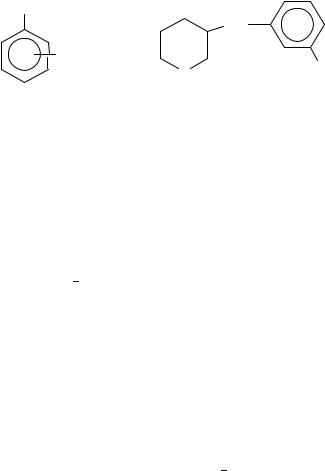
24. Analytical aspects |
1133 |
4.Phenols
a. HPLC and GC without derivatization. The three mononitrophenols (237) can be determined in distilled and drinking water by HPLC with amperometric detection using
a gold electrode493. p-Nitrophenol (237c) as urinary metabolite was determined by RPHPLC using a C18 column in isocratic mode. The method is rapid, economical and easily automated, and has excellent reproducibility and specificity494. A similar method was used to analyze 237c and its glucoside conjugates generated in perfused rat liver, bile or blood preparations495. 237c and its glucuronoor sulfo-conjugates were analyzed by the same technique, using UVD496. m-Nitrophenol (237b), a metabolite of the anticonvulsant nipecotic acid m-nitrophenyl ester (238) in mouse blood and brain tissue, was determined by HPLC497.
OH |
|
(a) 2-NO2 |
CO2 |
(b) 3-NO2 |
|
X (c) 4-NO2 |
NO2 |
N |
|
H |
|
(237) |
(238) |
p-Nitrophenol, dinitrophenols and nitrocresols in sub-mg/L concentrations were identified in rain water by isocratic HPLC-UVD with photodiode array. The detector allowed identification and determination of individual nitrophenols at their optimum wavelength by comparison with those of reference compounds498. RP-HPLC and multicomponent UVV spectroscopy were used to analyze monoand dinitrophenols formed during irradiation of nitrobenzene with 60Co -rays in aqueous media. Linear multiparametric regression analysis allowed one to calculate the concentrations of nitrobenzene, nitrophenols and dinitrophenols in water, HNO3 and KOH solutions499.
Electrokinetic detection is a technique that uses the charge acquired by a liquid flowing along a solid surface, and is considerably selective towards ionizing solutes. It was applied to determination of nitrophenols eluted from both unmodified and chemically modified silica gel with n-heptane acetone (90:10). The sensitivities are one order of magnitude higher than those attained using photometric detection500.
Nitrophenols in fog and atmospheric particles were determined by GC of the underivatized compounds and their corresponding acetate esters. Four fused-silica columns were used with three alternative detection modes, namely mass-selective detection, nitrogenspecific detection and ECD. GC-ECD of the acetate derivatives gave the best results501. A capillary GC-UVD method was developed for the determination of small amounts of nitrophenols present in the environment. The method was compared with HPLC-UVD from the point of view of selectivity and sensitivity. LOD for GC were about one-tenth of those for HPLC502.
Nitrocresols in air sample extracts were evaluated by GC using matrix-isolation infrared spectrometry. The IR spectra of the nitrocresols were recorded in argon matrix, xenon matrix, in the vapor phase and in dilute CCl4. The spectra of the nitrocresols that do not undergo intramolecular hydrogen bonding exhibited split OH stretching bands. Factors that might cause the band splitting are aggregation, solute matrix interactions and isolation of conformers. The presence of the split OH absorption bands did not preclude the use of the same technique to identify several nitrocresols produced by photooxidation of toluene and NOx503.
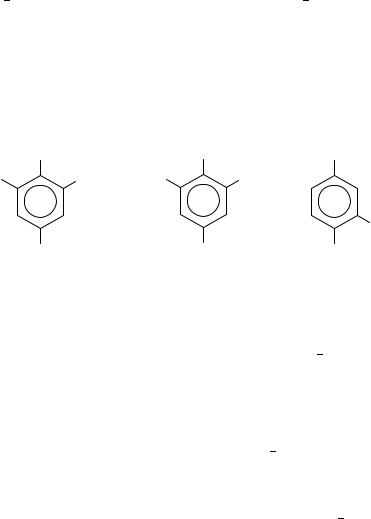
1134 |
Jacob Zabicky and Shmuel Bittner |
Nitroxynil (fasciolicide) (239) residues were determined in cow milk by RP-HPLC using dual-electrode coulometric detection; LOD was 0.7 mg/L, average recoveries of 92 97% (n D 5) from milk samples spiked with 0.01 0.1 mg/L of 239504. 2,6-Di-t-butyl-4-nitrophenol (240), a potentially powerful uncoupler of ATP-generating oxidative phosphorylation, has been physically and spectroscopically characterized using GC-MS, X-ray crystallography (XRD), DSC, TGA, Fourier-transform IR (FTIR) spectrophotometry, UVV spectrophotometry, and 1H and 13C FT-NMR505. A simple and fast method for the growth promoter roxarsone (241) in tissues of swine liver, kidney and muscle involves a microwave assisted LLE followed by HPLC; LOD 0.25 mg/g506. Another method for 241 is based on LLE followed by RP-HPLC with ICP-MS detection. This was applied to determination of 241 in tissue from chicken fed on a diet supplemented with this compound507.
OH |
|
OH |
AsO(OH)2 |
I |
NO2 |
t-Bu |
Bu-t |
NO2
CN |
NO2 |
OH |
(239) |
(240) |
(241) |
b. HPLC and GC with precolumn derivatization. Methylation, acetylation, silylation and dansilation are the commonly used techniques to derivatize nitrophenols. Thus, mononitrophenols and nitrocresols were determined in rain precipitations by GC-NPD and GC-MS, following LLE and methylation with diazomethane508. A sensitive GC-MS method was developed for the analysis of nitrophenols in polluted waters at 0.1 0.25 mg/L concentration, involving extraction and derivatization509.
Nitrophenolic compounds were analyzed by GC-MS-SIM, after trimethylsilylation by the flash heater derivatization procedure, which is suitable for nitrophenols not easily derivatized by the conventional methods. The method is suitable for identification of complex mixtures and for quantitative analysis in the nanogram range510.
Nitrophenols at sub-ppm levels can be determined after a two-phase dansylation using dansyl chloride (92). LC is carried out with a methanol water gradient followed by photolysis of the eluted derivatives. The strongly quenching electronegative nitrophenol fragments are photochemically removed from the derivatives, while the resulting dansyl hydride and dansyl methoxide products are sensitively detected by peroxy-oxalate chemiluminescence. Chemical excitation is carried out by post-column addition of 2-nitrophenyl oxalate and hydrogen peroxide dissolved in acetonitrile; LOD is ca 0.01 0.1 mg/L511.
c. Miscellaneous methods. Various variables were studied and optimized for the determination of a mixture of nitrophenols 237 by differential pulse voltammetry, using a carbon paste electrode modified with 50% (w/w) of C18; LOD was 2 mg/L of 237a, 5 mg/L of 237b and 4.3 mg/L of 237c. The method was applied to samples of a small lake that gathers rain water512.
Simultaneous determination of o- and p-nitrophenol was achieved in a FIA system based on extraction of ion pairs using tetrabutylammonium as counter ion at pH 7.4. Detection was with a diode-array at 260 nm for 237a and 410 nm for 237c; LOD was 0.03 mg/L, RSD 0.15% (n D 8) at 6 mg/L for both isomers; the calibration graphs were
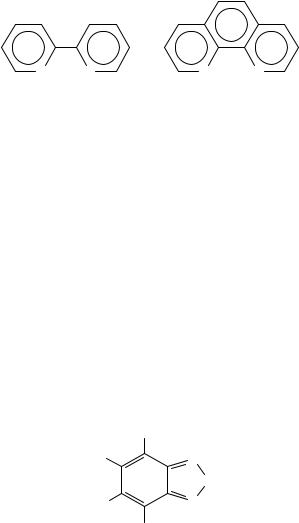
24. Analytical aspects |
1135 |
linear from 0.1 to 12 mg/L513. An indirect determination of nitrophenols consists of extraction of ionic associates of the analytes with complexes of Cu(II) with bipyridyl (242) or phenanthroline (243), followed by atomic absorption spectroscopy (AAS) determination of Cu. It was possible to determine several tenths to hundredths of ppm of nitrophenols. Extractable associates with these complexes are formed by phenols possessing two substituents or by higher molecular weight phenols such as naphthol or hydroxyquinoline. Monosubstituted phenols fail to form ionic associates of this kind514.
N |
N |
N |
N |
|
(242) |
|
(243) |
Analysis of p-nitrophenol in soil can be accomplished by supercritical fluid extraction (SFE) with carbon dioxide, giving recoveries equivalent to LLE with AcOEt. Quantitation of the recovered compounds by ELISA agreed well with the GC analysis. Extraction and analysis by SFE-ELISA results in greater sample throughput allowing for rapid screening of a large number of environmental samples515.
The electrochemical behavior of the components of a commercial plant growth stimulator (Sviton) was studied. This included determination of o-nitrophenol, p-nitrophenol, 2-methoxy-5-nitrophenol and 2,4-dinitrophenol by differential pulse voltammetry at a hanging mercury drop electrode. The optimum conditions were established for their quantitation over the 1 ð 10 7 to 1 ð 10 5 M range516.
5. Aromatic amines
The photometric determination of mixtures of aniline, p-nitroaniline and o-nitroaniline was described. Distribution coefficients and separation efficiency of these compounds by LLE in various solvents were compared517. Substituted nitroanilines such as 2-chloro-4- nitroaniline and 2,4-dinitroaniline are intermediates in the manufacture of the dye D&C Red No. 36 and were identified as impurities by RP-LC518. A spectrophotometric method was developed for the determination of aniline and m-nitroaniline in a mixture of aniline and nitroaniline isomers by derivatization with 5,7-dichloro-4,6-dinitrobenzofuroxan (244). The relative error of the determination is <5%519. See also Section IV.D.3.b for similar derivatives.
|
NO2 |
Cl |
N |
|
O |
O2 N |
N |
Cl
(244)
Nitrotoluidines and nitrotoluenes, in concentrations ranging from 0.1 to 20 mg/L, have been found in brooks and ponds in former ammunition production areas in Germany, by
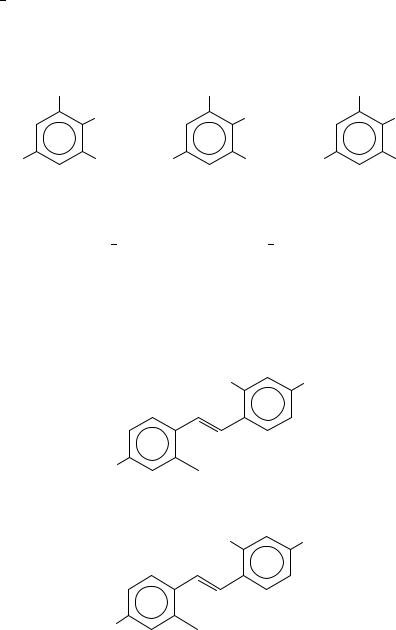
1136 |
Jacob Zabicky and Shmuel Bittner |
SPE with Amberlite XAD 2/4/8 mixture, elution with dichloromethane and RP-HPLC- UVD with a photodiode-array at their optimum wavelength; LOD is ca 50 ng/L with 85 105% recoveries, depending on the compound445.
3-Amino-5-nitro-o-toluamide (245) and 5-amino-3-nitro-o-toluamide (246), the principal metabolites in the tissues of chickens fed a diet containing the anticoccidic agent Zoalene (247), were shown to deplete in frozen liver tissues stored up to 1 year at 20 °C. Both ˛- and ˇ-anomers of the conjugate were observed by LC of tissue extracts520.
|
CONH2 |
|
CONH2 |
|
CONH2 |
|
Me |
|
Me |
|
Me |
O2 N |
NH2 |
H2 N |
NO2 |
O2 N |
NO2 |
|
(245) |
|
(246) |
|
(247) |
p-Nitroaniline has potential application in optical disk coating. Its surface-enhanced Raman scattering properties were recorded and vibrational assignments were made for the molecule in the IR (500 1800 cm 1) and Raman (200 1800 cm 1) frequency regions.
The Raman enhancement factor was estimated to be of the order of 106, and the limit of optical detection was estimated to be 30 fg (30 ð 10 15 g)521. The UVV luminescence
spectra of p-nitroaniline were analyzed taking into account dipolar interactions and H- bond complexes, conferring on the molecule a twisted conformation in the ground state, due to the rotation of the NH2 group around the C NH2 bond522.
HPLC and GC methods were used for analysis of water-soluble nitro-substituted aromatic sulfonic acids523. For example, 4-amino-40-nitrostilbene-2,20-disulfonic acid (248)
HO3 S |
NO2 |
H2 N |
SO3 H |
|
|
|
|
|
(248) |
|
|
HO3 S |
NO2 |
O2 N |
SO3 H |
|
(249)
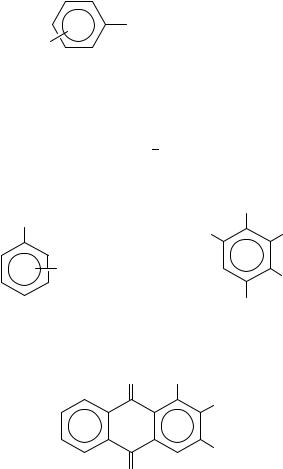
24. Analytical aspects |
1137 |
and 4,40-dinitrostilbene-2,20-disulfonic acid (249) were separated by RP-HPLC on a Bondapak column packed with 10 mm C18 stationary phase. The mobile phase was a 55:45 mixture by volume of 0.15 M aq ammonium sulfate and acetonitrile524.
A general approach to the analysis of multicomponent analytes bearing chromophores was demonstrated with a mixture of nitrophenylhydrazines (250). In a FIA system the mixture was preconcentrated by SPE on C18 bonded silica, followed by desorption with a buffer and detection by UVV on a diode array. The spectrum, resolved for three components, had RSD 1.43% for 11 samples containing 2 ð 10 5 M of 250c. The method allowed up to 40 samplings per hour527.
NHNH2 |
(a) X = 2-NO2 |
(b) X = 4-NO2 |
|
X |
(c) X = 2,4-di-NO2 |
(250) |
|
6. Miscellaneous aromatic compounds
4-Nitrobenzoic acid (251c) was determined in samples containing 2- and 4-nitrotoluene and trinitro-m-cresol (252) as impurities, by peak chromatography on untreated FN-3 paper. The mobile phase was water or water acetone solution. The detection reagent was alizarin Red S (253)525. An equivalent method was used to determine 3-nitrobenzoic acid (251b) using a lumomagneson solution for the development of the peak526.
|
OH |
CO2 H |
NO2 |
O2 N |
|
(a) 2-NO2 |
|
X (b) 3-NO2 |
Me |
(c) 4-NO2 |
|
|
NO2 |
(251) |
(252) |
ΟOH
OH
SO3 −
Ο
(253)
A rapid, sensitive and selective HPLC-UVD method for the determination of the neuroprotectant 1,2,3,4-tetrahydro-2,3-dioxo-6-nitrobenzo[f]quinoxaline-7-sulfonamide (254) in rat plasma has been established528.
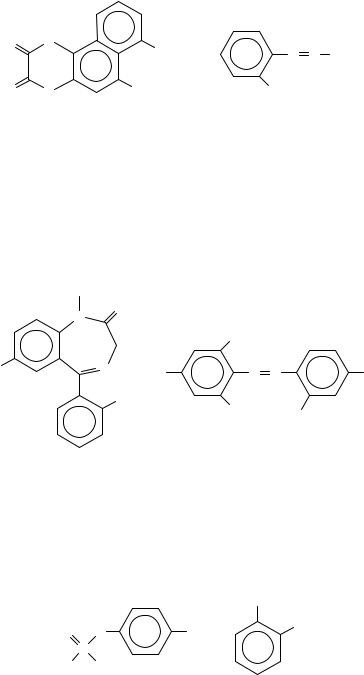
1138 |
|
Jacob Zabicky and Shmuel Bittner |
|
|
H |
|
|
O |
N |
SO2 NH2 |
N N NMe2 |
|
|
||
|
|
|
|
O |
N |
NO2 |
NO2 |
|
H |
|
|
|
|
(254) |
(255) |
The polarographic behavior of 1-(2-nitrophenyl)-3,3-dimethyltriazene (255) in a mixed aqueous-methanolic solvent was investigated by test polarography, differential pulse polarography and fast scan differential pulse voltammetry at a hanging mercury drop electrode529.
The adsorption behavior of the psychotropic drug flunitrazepam (256) at the hanging mercury drop electrode was studied by staircase voltammetry and by adsorptive stripping differential pulse voltammetry. 256 can be determined down to nanomolar levels by using adsorptive preconcentration prior to the differential pulse voltammetry scan. The method was applied to determination of 256 in human urine530.
Me
O
N
|
|
|
Cl |
|
|
O2 N |
N |
O2 N |
N |
N |
NEt2 |
|
F |
|
Cl |
|
|
|
|
|
|
NHAc |
|
|
|
|
|
|
|
(256) |
|
|
(257) |
|
|
Optimal conditions |
were found |
for analysis of |
the azo |
dye |
2,6-dichloro-4-nitro- |
20-(acetylamino)-40 -(diethylamino)azobenzene (257) by various polarographic reduction methods and a mechanism was proposed for the process531.
A spectrophotometric determination of parathion-methyl (258) in soil and various vegetables is based on reduction of the nitro group to an amino group with zinc/HCl, diazotization and coupling with guaiacol (259) to form a yellow-colored azo dye in alkaline medium532.
|
|
OH |
S |
O |
OCH3 |
NO2 |
||
|
P |
|
CH3 O |
OCH3 |
|
|
(258) |
(259) |
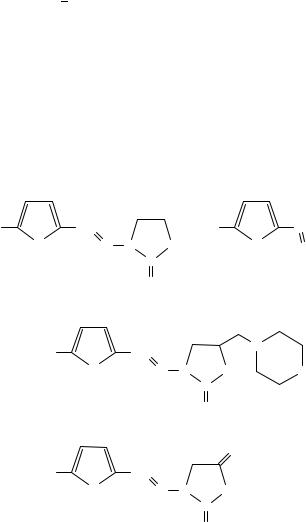
24. Analytical aspects |
1139 |
C. Nitrofurans
A variety of methods were developed for the identification and determination of the antimicrobial nitrofurans. They include LC, colorimetric and polarographic methods. Nitrofurans could be determined in animal tissues by extraction with acetonitrile, SPE and LC-UVD533. An LC-UVD method was statistically validated for the determination of nitrofuran drug residues in poultry534.
HPLC methods were modified for the determination of nitrofurans in different tissues535. A specific and sensitive HPTLC method was developed for the identification and determination of the furazolidone (260), nitrofurazone (261), furaltadone (262) and nitrofurantoin (263) in eggs and milk. The procedure includes extraction of the drug residues with acetonitrile and liquid liquid partitioning for clean-up. The pre-chromatographic photoreaction of the nitrofurans takes place in situ on the HPTLC plate in the presence of pyridine, leading to fluorescent, ionic products536. See reaction 14 in Section IV.D.3.g for analogous processess of color development. Compounds 260, 261 and 263 were deter-
mined in various matrices: In formulations, feed and milk by RP-HPLC-UVD537 or using a high-speed C18 3 ð 3 column538, and in animal tissues by RP-LC on a ODS Hypersil
column539; in foods of animal origin by extraction with acetonitrile, followed by TLC or HPLC540. 260 and 261 were determined in shrimp muscle tissue by LC541. 263 was
determined in plasma of rabbits by RP-HPLC, using acetanilide as internal standard542. LC was used to determine residues of 261 in chicken raised to maturity on a diet fortified with 0.0055% of this drug543. A differential pulse polarographic method is described for the determination of 261 in its pharmaceutical formulations using addition of standard544. Zero-crossing first derivative spectrophotometry was applied to the determination of 263
O2 N |
CH |
|
O2 N |
|
CH |
O |
N |
N |
O |
O |
NNHCONH2 |
|
|
C |
|
|
|
|
|
O |
|
|
|
|
(260) |
|
|
(261) |
|
O2 N |
|
CH |
|
N |
|
|
|
|
|
||
|
O |
N |
N |
O |
O |
|
|
|
C |
|
|
|
|
|
O |
|
|
|
|
(262) |
|
|
|
|
|
|
|
O |
|
O2 N |
|
CH |
|
|
|
|
O |
N |
N |
NH |
|
|
|
|
C |
|
|
O
(263)
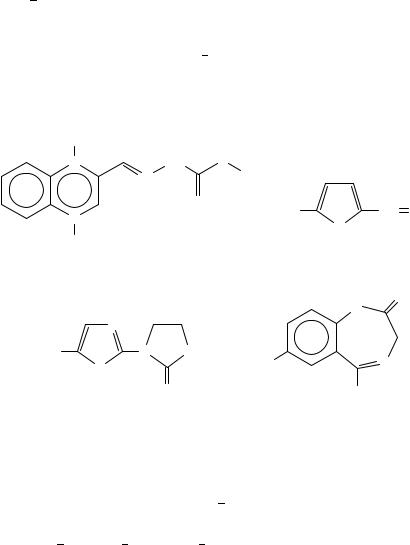
1140 |
Jacob Zabicky and Shmuel Bittner |
in tablets545 while for 260, 262 and 263 in formulations and in feeds first and second derivatives of the UVV absorption spectra were used546.
A combination of TLC separation followed by quantitative determination by HPLC of 260 263 and carbadox (264) was developed547. The simultaneous determination of 260 and nifuroxime (265) in vaginal suppositories by RP-HPLC-UVD was described548. A simple RP-HPLC-UVD assay has been developed for the determination of 260, 261, 263, 265 and niridazole (266), in pure form and in pharmaceutical preparations, using a Lichrosorb RP-18 column with methanol water buffer pH 3 eluent and detection at 365, 375, 367, 368 and 340 nm, respectively. Recoveries from bulk drugs were quantitative549. A simple colorimetric method for the determination of nitrazepam (267), 265, 266, 260, 261 and 263 was described, based on the orange to purple discoloration appearing when these nitro compounds react with tetrabutylammonium hydroxide in DMF550.
O |
|
|
|
|
|
N |
NH |
|
O |
|
|
|
N |
|
CH3 |
|
|
|
|
O |
O2 N |
|
CH NOH |
N |
|
|
|
||
|
|
|
O |
|
|
|
|
|
|
|
|
O |
|
|
|
|
|
|
(264) |
|
|
(265) |
|
|
|
|
|
H |
O |
|
|
|
|
N |
|
|
|
|
|
|
|
|
N |
|
|
|
|
O2 N |
N |
NH |
O2 N |
|
N |
|
S |
|
|
||
|
|
|
|
|
|
|
O |
|
|
Ph |
|
|
(266) |
|
|
(267) |
|
D. Miscellaneous Heterocyclic Compounds
An IR spectrophotometric method (alkali halide matrix) was elaborated for the fast detection and determination of concentration changes of nitroimidazoles, caused by their photolability in the solid state. Even small changes could be directly recognized, based on the appearance of a new band at 1600 1800 cm 1, which is absent in the initial compounds. A decrease in the content of the initial compound could be determined quantitatively by measurement of absorbance at analytical wavelengths, i.e. in the ranges 1665 1430, 1300 1100 and 730 990 cm 1. The method was tested using seven derivatives of 4- and 5-nitroimidazole including compounds applied in therapy, such as metronidazole (268a) and ornidazole (268b)551.
A series of monoclonal antibodies were generated that can bind dimetridazole (269) and other nitroimidazole drugs used in veterinary medicine. An extraction procedure was developed for these nitroimidazoles that is compatible with a competition ELISA method, based on binding of these antibodies to the drugs. As little as 1 ng of 269 could be detected in turkey muscle by this method552.
